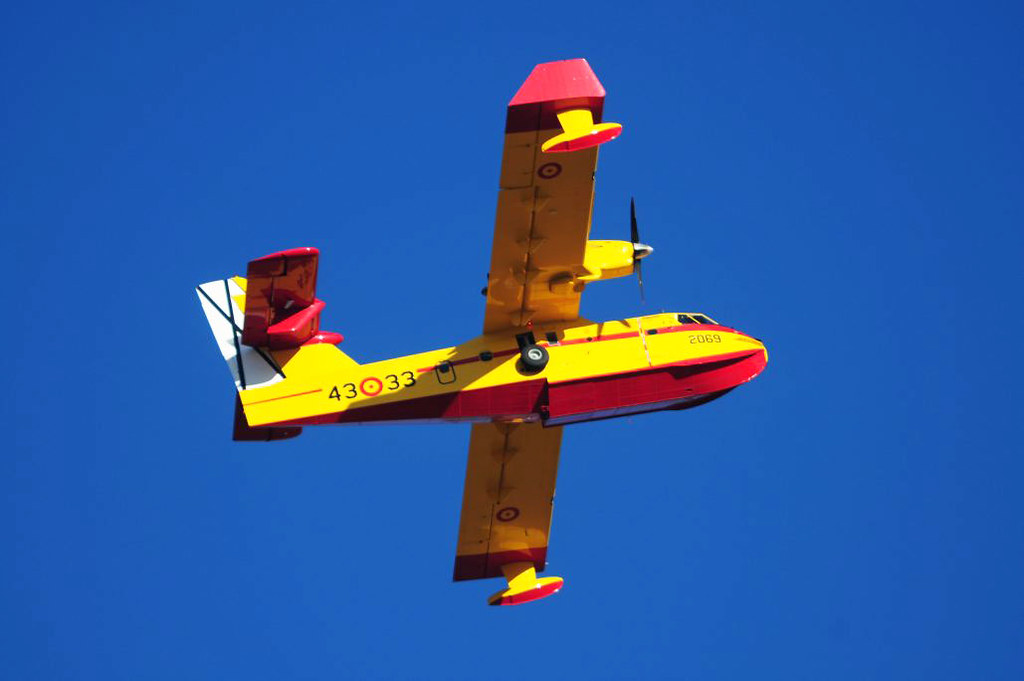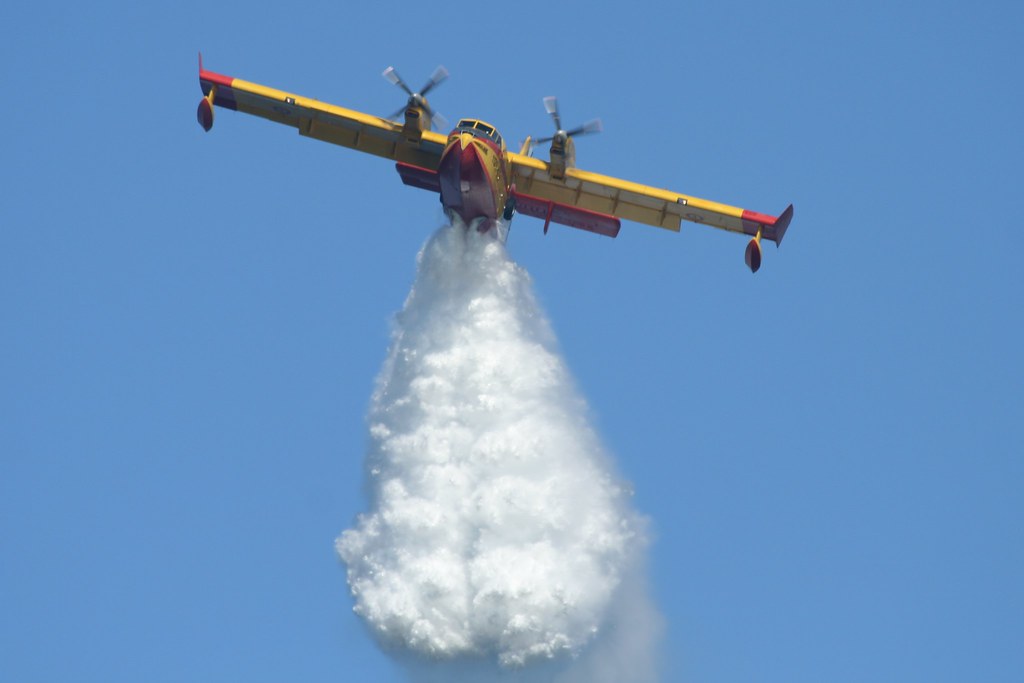Spain will modernize its fleet of firefighting seaplanes and buy seven new DHC-515s
The 43rd Group of the Spanish Air Force will see its fleet of firefighting seaplanes renewed with the acquisition of a new model.
The current fleet of the 43 Group and its modernization
This Friday, the Ministry of Defense of Spain has announced the signing of an agreement to modernize a total of 14 firefighting aircraft operated by the 43rd Group of the Air Force, based in Torrejón de Ardoz ( Madrid). The current fleet is divided this way:
- 10 Canadair CL-215T that are owned by the Ministry for the Ecological Transition and operated and maintained by the Air Force. Their license plates are UD.13-20, UD.13-21. UD.13-22, UD.13-23, UD.13-24, UD.13-25, UD.13-26, UD.13-27, UD.13-28 and UD.13-30.
- A Bombardier CL-415 that is owned by the Ministry for the Ecological Transition and that is operated and maintained by the Air Force, the UD.14-04-34, which arrived in Spain in 2013.
- 3 Bombardier CL-415 that are owned by the Ministry of Defense and that are operated and maintained by the Air Force. Their registration numbers are UD.14-01 (arrived in Spain in 2006), UD.14-02 and UD.14-03 (both received in 2008).

Until last year, the 43 Group operated four other CL-215T, but were withdrawn from service and auctioned due to their age. Their registration numbers were UD.13-15, UD.13-16 and UD.13-17 (these three built in 1978) and UD.13-19 (which arrived in Spain on August 28, 1984).

The fleet of CL-215T that remains in service are old CL-215 that had a piston engine and that were modernized starting in 1989, receiving new turboprop engines. These aircraft are the UD.13-20 (arrived in Spain on August 24, 1987), the UD.13-21 (built in 1989), and the UD.13-23, UD.13-24, UD.13 -25, UD.13-26, UD.13-27, UD.13-28, UD.13-29 and UD.13-30 (built in 1990).
The modernization of the CL-215T and CL-415 in service in Spain will be financed by the European Union, as they are integrated into the European Civil Protection Mechanism, as reported by the Ministry of Defense.

The purchase of seven new De Havilland Canada DHC-515 Firefighter
In addition to the modernization of the CL-215T and CL-415, the big news announced today is the purchase by Spain of seven new De Havilland Canada DHC-515 Firefighter floatplanes. This purchase will be coordinated by the European Commission and will be made jointly with four other CL-415 operating countries (Croatia, France, Greece and Italy) in addition to Portugal, whose Air Force will receive its first firefighting seaplanes. The six countries plan to buy a total of 20 DHC-515, so Spain could be one of the largest operators of this new aircraft.
The DHC-515 is basically an improved CL-415 It was announced by De Havilland Canada two years ago, in order to provide a more modern aircraft to CL-215T and CL-415 operators. "Important upgrades are being made that will increase the functionality and effectiveness of this legendarily rugged firefighting aircraft," the Canadian company then announced, noting that it already had letters of intention for the purchase of 22 aircraft by European customers.

The company that originally manufactured the CL-215 and CL-215T, Canadair, was acquired by Bombardier in 1986, which is why the CL-415 was marketed under the name of the new owner, despite that genetically these planes are still popularly known as Canadair (in Spain they are nicknamed "Botijo").
The CL-415 program was acquired by the Canadian company Viking Air in 2016. Viking Air, based in North Saanich (British Columbia), specializes in improved versions of some De Havilland Canada aircraft and in manufacture spare parts for older aircraft of that brand. De Havilland Canada has been trying to relaunch production of the CL-415 since 2019, and it will be at its Calgary (Alberta) factory where the new DHC-515s will be built.

Viking Air notes that the DHC-515 incorporates new technology and materials that expand its operational scope, with "a state-of-the-art avionics suite and the availability of a factory endorsed Full Motion Level D Flight Simulator,", which become "the most technically advanced multi-mission aerial firefighting aircraft on the market." In addition to its firefighting mission, the DHC-515 can be equipped with more options, such as "spray boom for insect control or oil spill dispersant, an enlarged cargo door for disaster relief support, and the ability to add a “QC” quick change sensor or medevac suite.".
You can see here the presentation video of the DHC-515 published by De Havilland Canada a year ago:
---
Main photo: Elentir. Canadair CL-215T of the 43rd Group of the Spanish Air Force in the waters of Samil Beach during the 2009 Vigo Air Festival.
|
Don't miss the news and content that interest you. Receive the free daily newsletter in your email: |
- Most read
- The 'hole' without civil flights around Paris during the opening of the Olympic Games
- Stunning footage of the F-15QA Ababil in flight recorded from its cockpit
- The firearms used by the Pontifical Swiss Guard, the smallest army in the world
- The most distant deployment of the Spanish Air Force in Australia and New Zealand
- Eurofighter vs F-35: the opinions of professional pilots on these advanced fighters
- The first photo of an F-16 fighter with Ukrainian insignia and the details it has revealed
- This is the driver station of an M1 Abrams tank and the impressive start of its engine

 ES
ES







Opina sobre esta entrada: